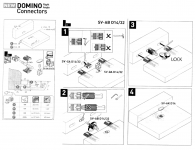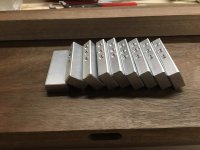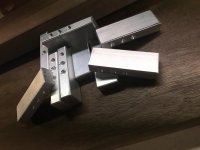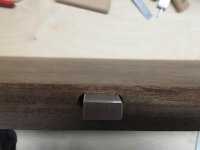Stan Tillinghast
Member
- Joined
- Mar 18, 2007
- Messages
- 309
My wife wants some bookshelves for our overflow collection. I want them to be knock-down for potential move, plan to use Domino connectors.
If about 11 1/2 inches deep, do I use 2 connectors with a regular(unglued) domino in the middle of each joint, or is that overkill?
If I were doing full depth cabinets, that's what I would use, as I understand it.
If about 11 1/2 inches deep, do I use 2 connectors with a regular(unglued) domino in the middle of each joint, or is that overkill?
If I were doing full depth cabinets, that's what I would use, as I understand it.






